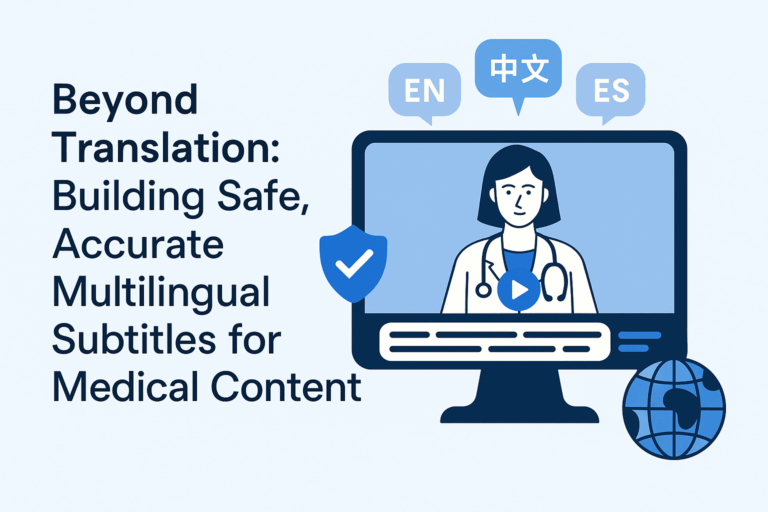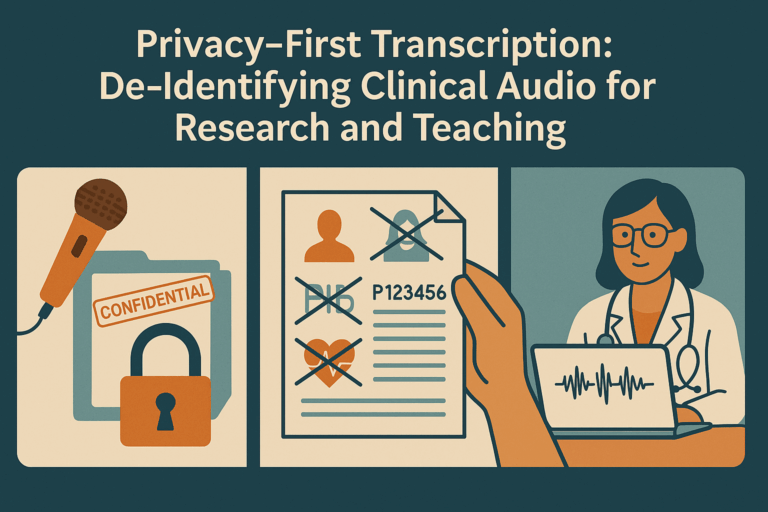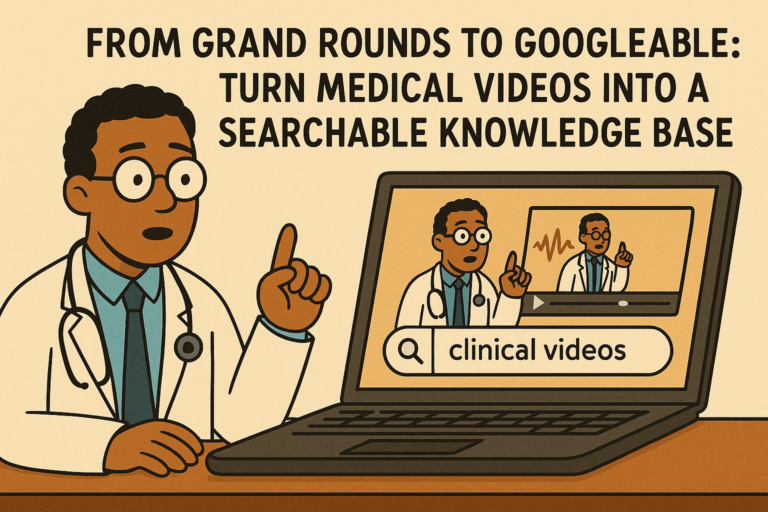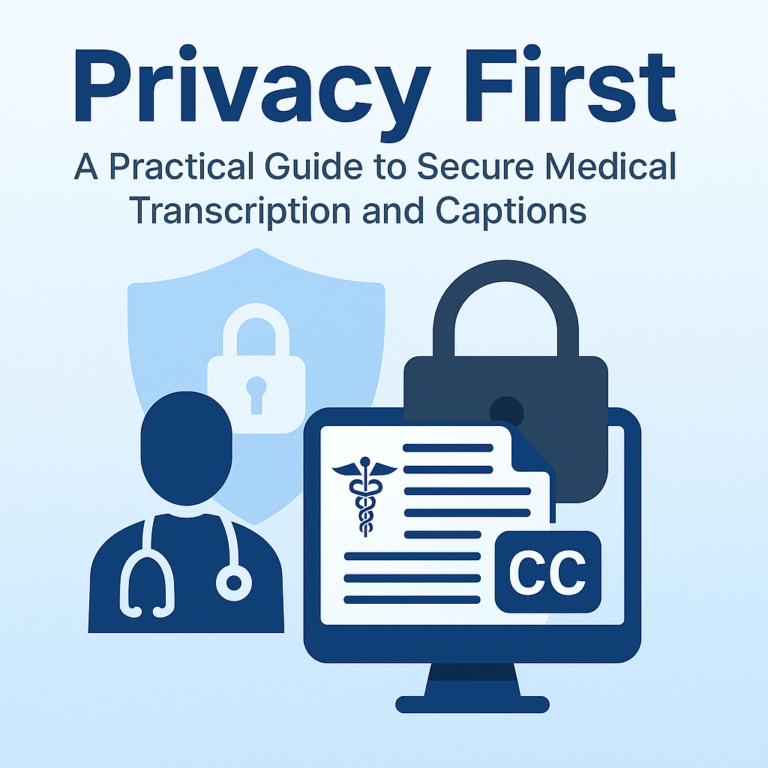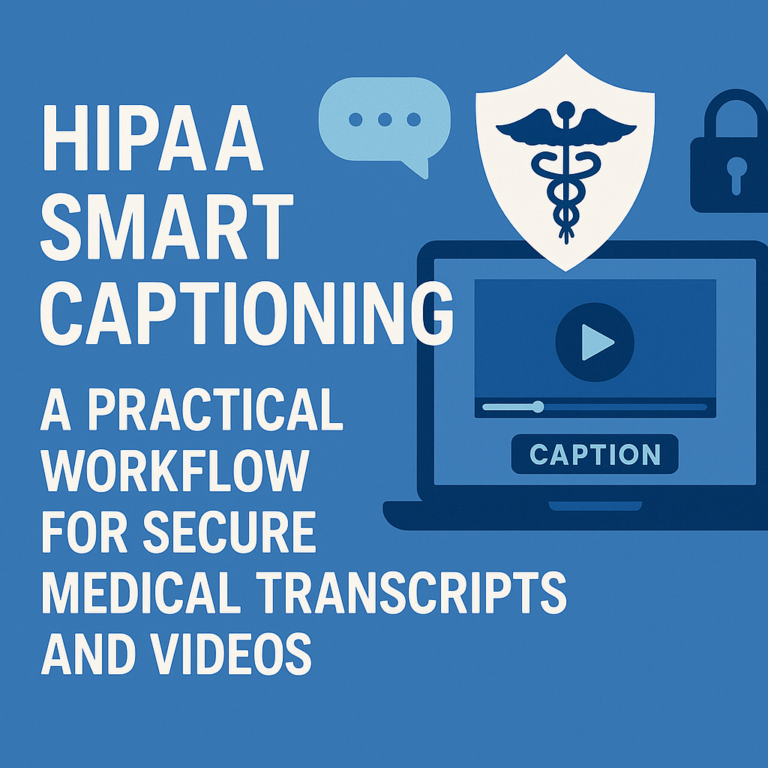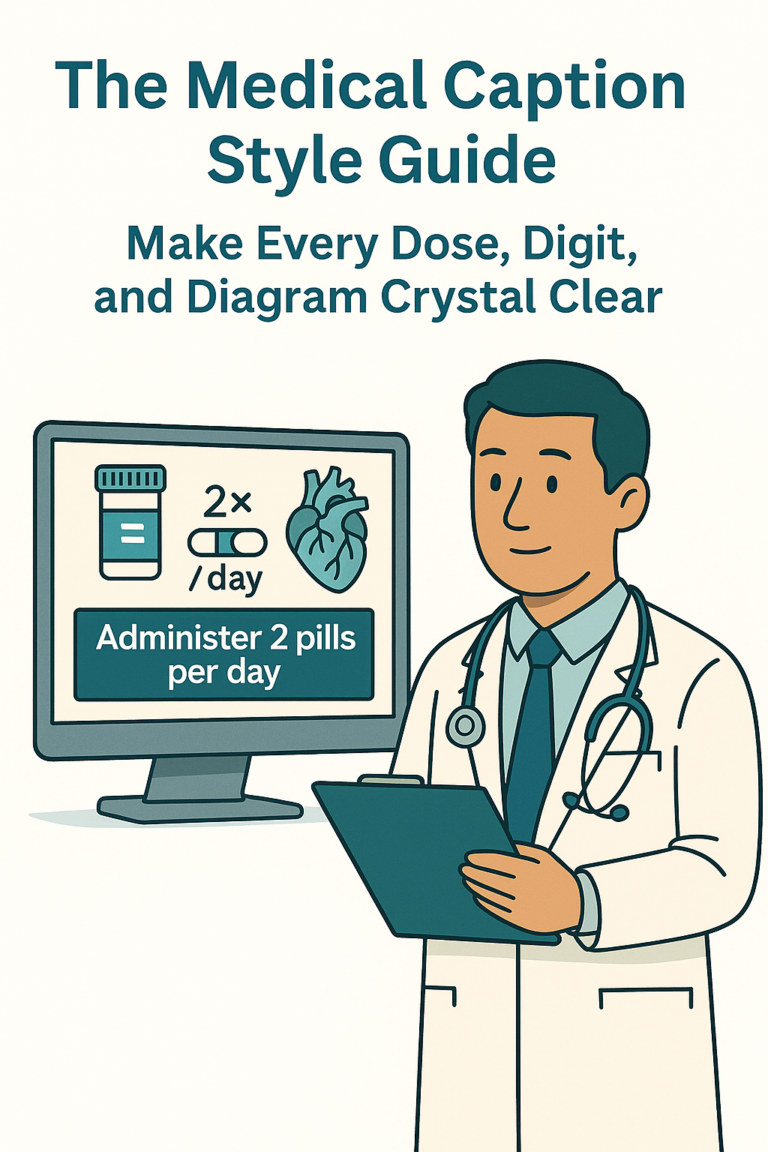On Tuesday mornings, the oncology team pours into a packed tumor board. A radiologist scrolls through slices, the pathologist points out a subtle mitotic figure, and someone in the back whispers the dose adjustment for renal impairment. Two hours later, a resident tries to remember exactly what was said about staging criteria—and the attending with hearing loss wonders if they missed a critical nuance.
When those same discussions are captured with accurate, clinical-grade captions and transcripts, the room opens up. The resident can search for TNM, jump to the exact timestamp, and cite the recommendation correctly. The attending replays a tricky segment with clear, on-screen text. The entire team practices safer, more inclusive medicine.
Why does this matter? Because in healthcare, words carry weight—doses, diagnoses, and decisions. Precision captions are not just a courtesy; they’re part of clinical quality and learning.
Where Captions Change Outcomes
Tumor boards and case conferences: Multi-speaker, jargon-heavy dialogues benefit from speaker labels and time-stamped clarity. Residents can review complex rationale without relistening to hours of audio.
Grand rounds and CME: Accessible recordings broaden participation across time zones and abilities, and clear transcripts support CME documentation and post-event quizzes.
Simulation debriefs: Trainees can reflect on communication, timing, and decision-making with a searchable, time-coded record.
Telehealth group visits and patient education: Captions help patients with hearing loss, non-native speakers, or anyone watching in a noisy environment understand care plans accurately.
Research meetings: Accurate transcripts create auditable trails of protocol decisions for IRB reporting and trial documentation.
What Makes a Caption Clinical-Grade
General auto-captions often stumble on FAST, FEV1, or filgrastim—and a misplaced decimal or unit can be dangerous. Clinical-grade captioning should include:
Terminology fidelity: Correct drug names, anatomy, and acronyms. Expand acronyms on first mention (e.g., COPD—chronic obstructive pulmonary disease), then use the acronym thereafter when appropriate.
Numeric accuracy: Doses, rates, units, and decimals must be exact (e.g., 0.25 mg vs 25 mg). Maintain consistent unit formatting and include Greek letters where clear context matters (e.g., alpha-1 antitrypsin).
Speaker labeling: Identify speakers consistently (Radiology, Pathology, Moderator) so viewers can attribute reasoning and follow multidisciplinary dialogue.
Timecoding and segmentation: 1–2 lines per caption, ~32–42 characters per line, 2–6 seconds on screen, and logical breaks at phrase boundaries. This improves readability without lag.
Non-speech events: Note meaningful sounds like [applause], [laughter], or [patient enters], and describe relevant audio cues (e.g., [ultrasound Doppler audible]).
Readability and style: Sentence case, minimal punctuation clutter, and consistent capitalization of proper nouns and eponyms.
Confidentiality safeguards: De-identify PHI when publishing educational recordings. Use access controls, redact identifiers, and maintain audit logs for protected content.
Quality assurance: Measure word error rate (WER), but also check medical-term accuracy, numbers, and abbreviations. A small WER with a wrong dose is not acceptable.
MedXcribe is fine-tuned on medical data, which means it recognizes specialty terms out of the box and handles multi-speaker clinical audio with high accuracy. You can also add a custom glossary for local protocols, rare drugs, or site-specific abbreviations to further boost precision.
A Practical Workflow You Can Copy This Week
Before you record
– Choose the room: Reduce echo (soft furnishings, closed doors) and avoid HVAC noise when possible.
– Mic matters: Use a boundary or table microphone for groups or lavalier mics for presenters. Place mics close to speakers.
– Set the ground rule: One speaker at a time, state drug names clearly, and verbalize numbers with units.
Capture and upload
– Record at 44.1–48 kHz, 16-bit or better. Avoid aggressive noise suppression that can smear consonants.
– Upload to MedXcribe and select the relevant specialty profile (e.g., oncology, cardiology). Add a custom glossary (drug list, acronyms, physician names).
– Turn on diarization (speaker separation) and choose caption export formats your platform needs (SRT, VTT, TXT, or DOCX transcript).
Review and refine
– Proofread high-stakes segments: Doses, pathways, and decisions. Use MedXcribe’s side-by-side audio player and jump by timestamps.
– Standardize style: Decide on acronym expansion rules, units (SI vs conventional), and speaker labels before you publish.
– Accessibility check: Ensure contrast, readable font, and proper caption placement that doesn’t obscure slides or imaging.
Publish and maintain
– Versioning: If a guideline changes, update the transcript and note the revision date in the caption metadata.
– Distribution: Embed captions on your LMS, intranet, or video platform. Provide a downloadable transcript for keyword search and citation.
– Multilingual reach: For patient education or global teams, translate the transcript into target languages, then regenerate captions. Have a bilingual reviewer confirm medical nuance.
The Hidden Upside: Searchable Clinical Knowledge
Once your videos have transcripts, the content becomes queryable. Residents can search “hypoalbuminemia,” researchers can find every mention of “adaptive trial,” and QI leaders can extract consistent themes from debriefs. In busy environments, this turns scattered conversations into a living, searchable knowledge base.
Takeaway
When clinical conversations are captioned precisely, they stop being one-time events and become lasting assets for safety, education, and inclusion. If you’re ready to turn tumor boards, grand rounds, or patient education videos into accurate, accessible resources, try MedXcribe. Upload an audio or video file, add your glossary, and see what clinical-grade captions feel like in practice.

